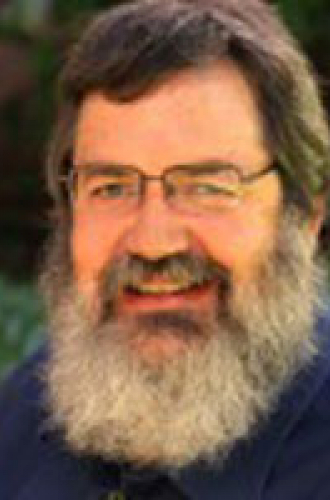-

-

-
Richard W Aldrich
Professor Emeritus
Department of Neuroscience, College of Natural Sciences
Karl Folkers Chair in Interdisciplinary Biomedical Research II (Emeritus)Molecular mechanisms of ion channels and signaling molecules.-
Richard Aldrich graduated with high distinction from the University of Arizona in 1975 with a Bachelor of Sciences degree in Biological Sciences. He received his Ph.D. in Neuroscience from Stanford University in 1980, after which he did postdoctoral work at Yale University in Physiology. He joined the faculty at Yale in the Section of Molecular Neurobiology before returning to Stanford in 1985 as a faculty member in the Department of Neurobiology and subsequently the Department of Molecular and Cellular Physiology, where he served as department chair from 2001-2004. Dr. Aldrich was a member of the Howard Hughes Medical Institute from 1990 until moving to The University of Texas in 2006, where he is Professor and former chair of the Section of Neurobiology (now Department of Neuroscience) and the Karl Folkers Chair II in Interdisciplinary Biomedical Research. He has served on the council and as president of the Society of General Physiologists, and is a Fellow and past president (2011-2012) of the Biophysical Society. He is a member of the National Academy of Sciences.
Research Summary:
Ion channels are the molecular units of electrical signaling in cells. They are proteins that regulate the movement of ions--such as sodium, calcium, and potassium--into and out of cells. They are responsible for the conversion of external sensory signals to the electrical language of the nervous system and for the integration of these signals to generate appropriate behavior. Ion channels are also important for the generation and regulation of the heartbeat, for contraction of muscles, and for the release of hormones in the bloodstream. The body contains a large variety of ion channel types, specialized to select for certain species of ions and to selectively open and close in response to a number of different stimuli, such as the binding of a neurotransmitter molecule or a change in the voltage that exists across a cell's membrane. Work in the Aldrich laboratory is directed towards understanding the mechanisms of ion channel function, their regulation by calcium, and the role of ion channels in electrical signaling and physiology. This research relates to transduction, processing, and transmission of information in the nervous other physiological systems and to basic mechanisms of coupled conformational changes in signaling proteins. We use a combination of molecular biology, biochemistry, electrophysiology, biophysics, cellular and systems physiology, and computational biology.
-
Understanding molecular transduction in ion channels and signaling molecules using biophysical methods.
-
2016. Yan J, Li Q, Aldrich RW. Closed state-coupled C-type inactivation in BK channels. Proc Natl Acad Sci U S A. 2016 Jun 21;113(25):6991-6. doi: 10.1073/pnas.1607584113. Epub 2016 Jun
2016. Halling DB, Liebeskind BJ, Hall AW, Aldrich RW. Conserved properties of individual Ca2+-binding sites in calmodulin. Proc Natl Acad Sci U S A. 2016 Mar 1;113(9):E1216-25. doi: 10.1073/pnas.1600385113. Epub 2016 Feb 16.
2015. Hines KE, Bankston JR, Aldrich RW. Analyzing single-molecule time series via nonparametric Bayesian inference. Biophys J. 2015 Feb 3;108(3):540-56. doi: 10.1016/j.bpj.2014.12.016
2014. Hines KE, Middendorf TR, Aldrich RW. Determination of parameter identifiability in nonlinear biophysical models: A Bayesian approach. J Gen Physiol. 2014 Mar;143(3):401-16. doi: 10.1085/jgp.201311116. Epub 2014 Feb 10.
2014. Halling DB, Kenrick SA, Riggs AF, Aldrich RW. Calcium-dependent stoichiometries of the KCa2.2 (SK) intracellular domain/calmodulin complex in solution. J Gen Physiol. 2014 Feb;143(2):231-52. doi: 10.1085/jgp.201311007. Epub 2014 Jan 13.
2014. Chen X, Yan J, Aldrich RW. BK channel opening involves side-chain reorientation of multiple deep-pore residues.
Proc Natl Acad Sci U S A. 2014 Jan 7;111(1):E79-88. doi: 10.1073/pnas.1321697111. Epub 2013 Dec 23.
2012 Yan, J., and Aldrich, R.W. , BK channel modulation by leucine-rich repeat containing proteins. PNAS 109: 7917-7922
2011 Johnson B. E., D. A. Glauser, E. S. Dan-Glauser, D. B. Halling,R. W. Aldrich, & M. B. Goodman. Gating of C. elegans BK potassium channels is regulated by alternative splicing of RCK1 and the RCK1-RCK2 linker , PNAS 108: 20784-20789
2011 Chen, X. and Aldrich, RW, Charge substitution for a deep-pore residue reveals structural dynamics during BK channel gating., Journal of General Physiology 138: 137-154 view
2011 Li W, Aldrich RW., Electrostatic influences of charged inner pore residues on the conductance and gating of small conductance Ca2+ activated K+ channels., Proc Natl Acad Sci U S A 108: 5946-5953
-














